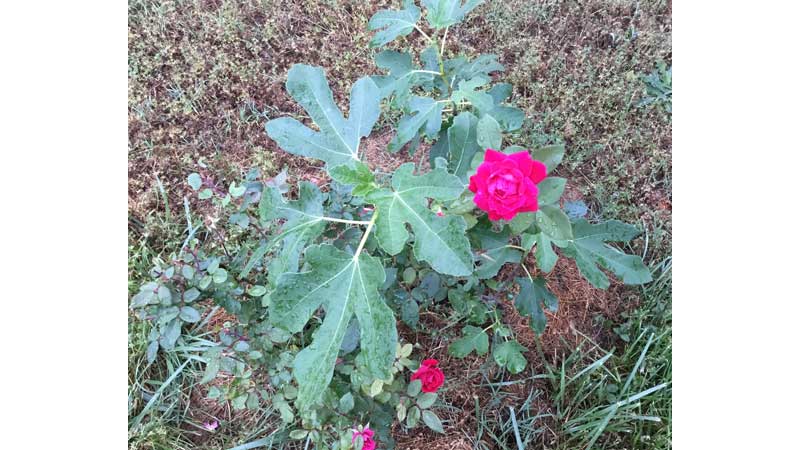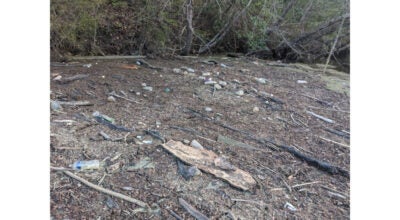Plant diversity is important
Published 3:06 pm Wednesday, July 7, 2021

- A knockout rose blooms in an area where it had not been planted. (Photo submitted by Mark C. Carroll)
|
Getting your Trinity Audio player ready...
|
By Mark C. Carroll
Diversity is important in all aspects of nature. We have discussed companion planting in past articles; today, I thought we could talk about what I would call “plant mixtures” or combinations. Regardless of whether plants are grown together for a synergistic benefit, there may be other reasons to do so, and perhaps no particular reason is required.
To start off, I discovered several roses unexpectedly growing in my garden with other plants. In the photo, I have a knockout rose that I was trying to discourage. It is flowering with a young fig tree. Less than 6 feet away, I had another rose bush that was flowering at the base of a young crepe myrtle. They were so beautiful that I could not bring myself to interrupt their growth. This brings me to a quote by Louie Schwartzberg: “Beauty and seduction, I believe, is nature’s tool for survival, because we will protect what we fall in love with.” Indeed, these roses survive yet due to their placement and my unexpected pleasure with it.
Generally, I try to plant more intentionally. In a more traditional approach, my garden beans are planted with my sweet corn, so the corn can act as a trellis for bean expansion, while the beans provide additional nitrogen for the corn. I also like planting tomatoes in areas where small trees are not doing well. An apple tree that never really liked its location can hold up annuals until I replace it. Last year, one of my Japanese Maples died, likely from sun scald, so I planted cucumbers and had a cucumber tree by fall.
Another way to mix plants is to combine them functionally. If, for example, your privacy trees are deciduous (lose their leaves each year), have you ever wondered how you could maintain privacy through the winter? Perhaps an evergreen climbing hydrangea or an evergreen clematis could fill in the natural privacy fence.
Plant mixtures are not limited to my property; most of us have seen salad pots with a variety of lettuce and veggies or an herb mixture for sale. Many times, these not only mix the plants, they mix different arrangements like a florist would for beauty and practicality.
My real point is one type of plant relegated to one growing option in a well defined area can really limit options in our garden. Perhaps equally important is it limits our growth and understanding of how the plants we all care so much for interact with each other.





